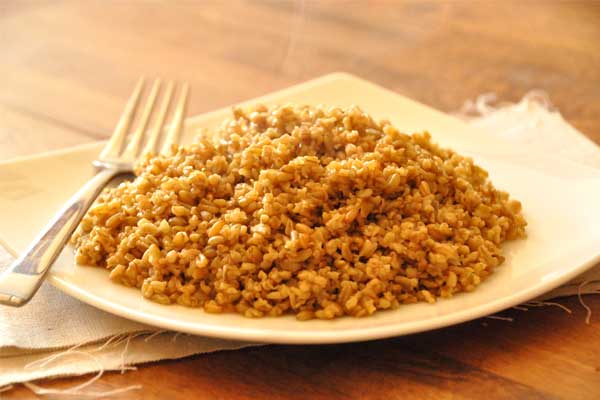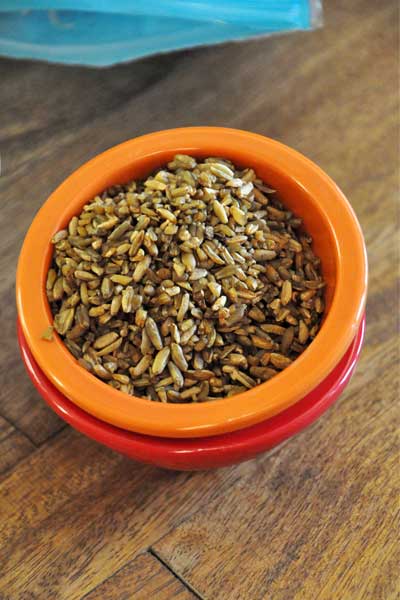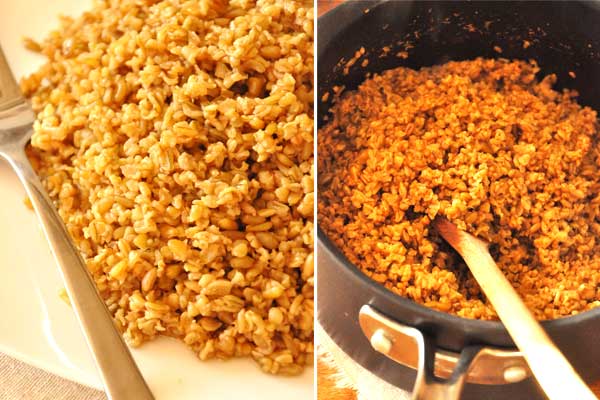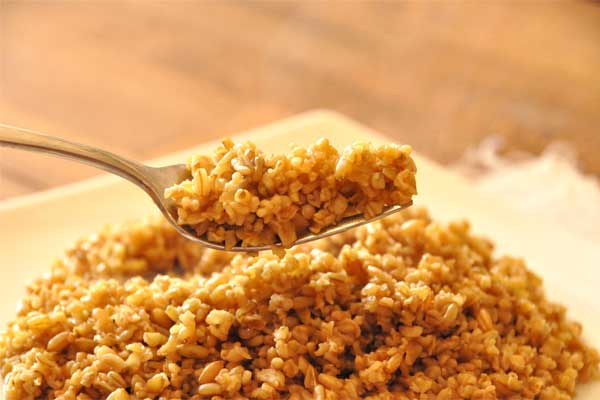We love reviewing new products at Diets In Review, especially ones that we’ve never heard of before. It’s like getting to take a sneak peek at the newest products hitting the market and we get to tell you all about them first. Our most recent product review? Freekeh, which is roasted green wheat.
If you’re trying to imagine what roasted green wheat tastes like, think of a mix between rice in appearance and flavor and wheat berries in texture. It cooks up just like rice but has a slightly chewier feel.
This particular sample of freekeh was sent to us by Freekeh Foods, Inc. based in Minneapolis, Minnesota. The flavor we tried was tamari, which had a deep smoky and savory taste. But they also offer plain and rosemary sage varieties if tamari isn’t your thing.
According to the Freekeh Foods website, freekeh literally means “to rub” in Arabic. The story behind the grain is that it was discovered on accident nearly 2,000 years ago when a Middle Eastern village was attacked. Their crop of young green wheat was set fire and though some counted the crop a total loss, other more resourceful villagers rubbed off the chaff, cooked it as usual and thus, freekeh was born.
Freekeh can be used in a variety of ways, including as a side dish as well as in soups, pilafs and salads. It’s hearty enough to be an entree with the addition of a little protein and vegetables, yet versatile enough to add to just about any savory recipe you can dream up.
The health benefits of freekeh are also impressive: It’s a low GI food, meaning it’s beneficial in preventing and managing diabetes. It’s also low in carbohydrates, has a prebiotic effect, and is very high in fiber (more than four times the content of brown rice). Freekeh also has a protein content of nearly 13 percent compared to white rice, which has just 6 percent. Lastly, it’s high in calcium, iron, zinc, and lutein, which has been shown to help prevent age-related macular degeneration.
Testing out this product was simple. We just emptied the entire bag into a saucepan with 2.5 cups of water, brought it to a boil and let it simmer covered for 25 minutes. While we did enjoy the texture and health benefits of the freekeh, we didn’t care much for the tamari flavor as it has a very distinct taste. But we would be interested in trying the original and rosemary flavors for a better feel for what freekeh is like.
If you’re interested in trying out this product simply visit the company’s website to place an order or see if any stores in your area carry their products. There you’ll also find a cookbook that demonstrates more than 30 ways to use this ancient grain.
Also Read:
Brown Rice vs White Rice: Which Grain Reigns Supreme?




